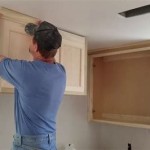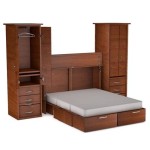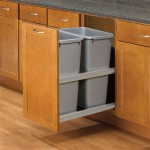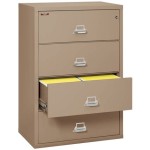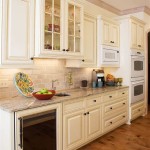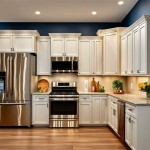Understanding Under Cabinet Kitchen Vent Hoods
Under cabinet kitchen vent hoods are a common and practical solution for kitchen ventilation. These hoods are designed to be installed beneath kitchen cabinets, directly above the cooking surface. Their primary function is to remove smoke, grease, odors, heat, and other airborne contaminants produced during cooking. This contributes significantly to maintaining a clean and healthy indoor air quality within the home.
The selection and installation of an under cabinet vent hood requires careful consideration of several factors, including the hood's size, ventilation capacity (measured in cubic feet per minute or CFM), the type of filtration system employed, the noise level during operation, and the overall design aesthetics. Understanding these aspects is crucial for making an informed decision and ensuring the chosen vent hood effectively meets the needs of the cooking environment.
This article will delve into the various aspects of under cabinet kitchen vent hoods, providing a comprehensive overview of their functionality, types, key features, and considerations for selection and maintenance.
Key Point 1: Types of Under Cabinet Vent Hoods and Ventilation Systems
Under cabinet vent hoods can be broadly categorized based on their ventilation system: ducted and ductless (recirculating). Understanding the differences between these systems is fundamental in choosing the appropriate option for a particular kitchen setup.
Ducted Vent Hoods: These hoods are connected to ductwork that vents the extracted air outside the home. They represent the most effective method of removing airborne contaminants as they completely expel pollutants from the kitchen. The ductwork typically leads to an exterior wall or the roof. The efficiency of a ducted system depends on the length and configuration of the ductwork, shorter and straighter ducts being optimal. Ducted hoods are generally recommended for frequent and high-heat cooking, as they provide superior ventilation and air purification.
Ductless (Recirculating) Vent Hoods: Ductless vent hoods, also known as recirculating hoods, do not require ductwork. Instead of venting air outside, they filter it through charcoal filters and then recirculate it back into the kitchen. These filters are designed to capture grease, odors, and some smoke particles. Ductless hoods are generally easier and less expensive to install as they do not involve structural modifications for ductwork installation. However, they are less effective than ducted hoods in removing heat and humidity. Furthermore, the charcoal filters require periodic replacement to maintain optimal performance. Ductless hoods are often suitable for kitchens where ductwork is impractical or impossible to install, or for light cooking needs.
The choice between a ducted and ductless system hinges on factors such as the kitchen layout, the frequency and intensity of cooking, and budget considerations related to installation and maintenance.
Key Point 2: Key Features and Specifications of Under Cabinet Vent Hoods
Beyond the ventilation system, several features and specifications are important to consider when selecting an under cabinet vent hood. These impact performance, convenience, and overall user experience.
CFM (Cubic Feet per Minute): CFM measures the volume of air the vent hood can move per minute. A higher CFM rating indicates a more powerful ventilation system. The appropriate CFM rating depends on the size of the cooking surface and the type of cooking typically performed. As a general guideline, a CFM rating of 100 CFM per linear foot of the cooktop is recommended. For example, a 30-inch cooktop would ideally require a vent hood with a CFM of at least 250 CFM. High-heat cooking methods, such as frying or wok cooking, necessitate higher CFM ratings.
Size: The vent hood should be at least as wide as the cooktop. Ideally, it should extend a few inches beyond the cooktop on each side to effectively capture rising smoke and fumes. Common widths for under cabinet vent hoods are 30 inches and 36 inches, but other sizes are available to accommodate various cooktop dimensions.
Filtration System: Vent hoods utilize filters to capture grease and other particles. Common filter types include mesh filters, baffle filters, and charcoal filters (for ductless hoods). Mesh filters are typically made of aluminum or stainless steel and can be easily cleaned in a dishwasher. Baffle filters are more effective at capturing grease and are also dishwasher-safe. Charcoal filters, used in ductless systems, are disposable and need to be replaced periodically, typically every 3 to 6 months, depending on usage.
Lighting: Most under cabinet vent hoods incorporate built-in lighting to illuminate the cooking surface. LED lights are increasingly common due to their energy efficiency, long lifespan, and bright illumination. The lighting should be adequately bright and positioned to provide clear visibility of the cooking area.
Noise Level (Sones): The noise level of a vent hood is measured in sones. A lower sone rating indicates quieter operation. Noise level is an important consideration, especially for open-concept kitchens where excessive noise can be disruptive. Some vent hoods offer multiple fan speeds, allowing users to adjust the ventilation power and noise level according to their needs.
Fan Speeds: Multiple fan speed settings provide flexibility in controlling the ventilation power. Lower speeds are suitable for simmering or light cooking, while higher speeds are necessary for high-heat cooking or when dealing with strong odors.
Controls: Vent hoods typically feature either button controls or electronic touch controls. Touch controls offer a sleek and modern aesthetic and are often easier to clean. Some higher-end models may include features such as automatic shut-off timers or remote control operation.
Materials and Finish: Under cabinet vent hoods are typically constructed from stainless steel, painted metal, or a combination of materials. Stainless steel is durable, easy to clean, and provides a modern look. The finish should be resistant to staining and corrosion.
Key Point 3: Installation, Maintenance, and Safety Considerations
Proper installation, regular maintenance, and adherence to safety guidelines are essential for ensuring the optimal performance and longevity of an under cabinet vent hood. Incorrect installation or inadequate maintenance can compromise its effectiveness and potentially pose safety hazards.
Installation: Installation of a ducted vent hood typically requires professional assistance, particularly if ductwork is not already in place. Ductless hoods are generally easier to install, but proper mounting and electrical connections are still crucial. The installation process should follow the manufacturer's instructions closely. Factors such as proper venting to the exterior, adequate electrical supply, and secure mounting are critical for a safe and effective installation.
Cleaning: Regular cleaning is essential for maintaining the performance of the vent hood. Grease buildup on the filters and interior surfaces can reduce airflow and increase the risk of fire. Mesh and baffle filters should be cleaned regularly, typically every month or two, depending on cooking frequency. They can usually be cleaned in a dishwasher or by hand using warm soapy water. The exterior surfaces of the vent hood should be wiped down regularly to remove grease and grime. Stainless steel cleaners can be used to maintain the finish and prevent staining.
Filter Replacement: Ductless vent hoods require periodic replacement of the charcoal filters. The frequency of replacement depends on the type of cooking and the manufacturer's recommendations. Typically, charcoal filters need to be replaced every 3 to 6 months.
Maintenance: Periodically inspect the ductwork (for ducted systems) to ensure it is free of obstructions and leaks. Clean the fan blades and motor housing to remove dust and debris. Ensure that all electrical connections are secure and that the vent hood is properly grounded.
Safety: Never operate the vent hood without filters in place. This can allow grease and other particles to enter the fan motor, potentially causing damage or fire. Avoid using flammable liquids near the vent hood. When cooking with high heat or using flammable oils, ensure that a fire extinguisher is readily available. If a fire occurs in the kitchen, immediately turn off the vent hood to prevent the spread of flames through the ductwork.
By carefully considering these factors and adhering to proper installation, maintenance, and safety guidelines, homeowners can ensure that their under cabinet kitchen vent hood effectively removes airborne contaminants, maintains a clean and healthy kitchen environment, and provides years of reliable performance.

Best Under Cabinet Range Hoods Of November 2024 Forbes Home

Thor Kitchen 30 Under Cabinet Range Hood 11 Tall Trh3006

30 Under Cabinet Range Hood In Stainless Steel Samsung Us

Kitchenaid 30 In Low Profile Under Cabinet Ventilation Range Hood With Light Stainless Steel Kvub400gss

Vissani Qr272s Under Cabinet Range Hood White For Sale Online Ebay

Streamline 30 In Domenico Ducted Under Cabinet Range Hood Grit Black With Mesh Filters Push Button Control Led Light T 3208 4 Dt The Home

Buy Kitchenaid 30 Low Profile Under Cabinet Ventilation Hood Kvub400gss

30 Under Cabinet Range Hood In Stainless Steel Samsung Us

Empava 2024 New Model 30 In Ducted 500 Cfm Stainless Steel Under Cabinet Range Hood Emp 30rh01 At Lowes Com

Under Cabinet Xo Appliance

